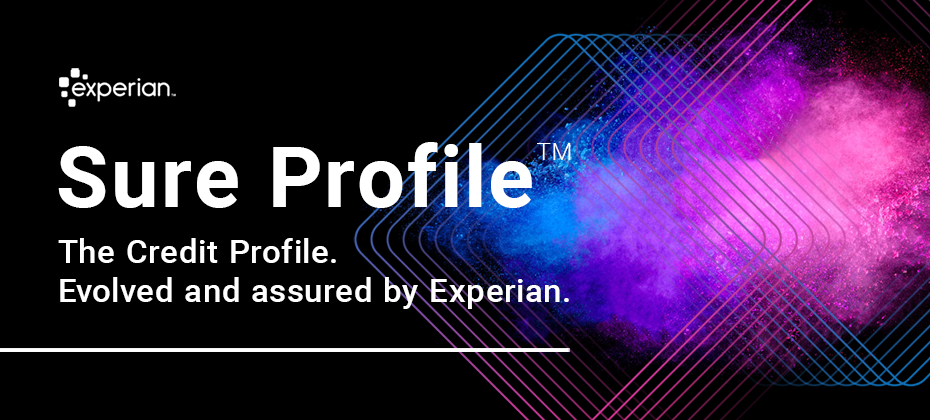Tag: Ascend

Credit decisioning has traditionally relied on static data like credit bureau scores, income statements, and past repayment history. As financial behavior becomes more dynamic and consumer expectations shift toward instant decisions, real-time data is emerging as a powerful tool in reshaping how lenders assess risk.

What is feature engineering? Feature engineering helps organizations turn raw data into comprehensive model development. This process depends heavily on creating new custom features to enhance model performance, as well as the quality of the data being used. When data is fragmented or managed poorly, it can lead to increased operational costs, missed revenue opportunities, and compliance risks. The necessity of integrated feature management Feature engineering is essential for financial institutions to identify valuable features that provide significant insights and predictive power in various analytics applications. By integrating feature engineering into the feature lifecycle, organizations can convert raw data into more accurate and value-driving features, better manage features for audit purposes and compliance efforts, and build higher-performing models. At Experian, we have developed a unified feature engineering solution that integrates capabilities across various tools such as the Ascend Analytical Sandbox™ and Ascend Ops™. This comprehensive approach streamlines the feature engineering process, making it more efficient and effective in supporting the complete feature lifecycle. The challenges in feature engineering 54% of source data used by financial institutions for credit decisioning is not model-building ready.1 Financial institutions need access to high-quality data sources and the ability to modify and combine data to make more profitable data-driven decisions. In addition, organizations need the necessary tools to solve the myriad of challenges involved with feature engineering. These challenges include: Costs: Sourcing and centralizing data can be expensive, and managing and updating data definitions for engineering and analytics is costly. Collaboration: Managing a centralized feature library is difficult and often skipped. As AI and analytics teams become more complex across the enterprise, maintaining and governing feature definitions in a centralized library is a must-have. Inconsistencies: Calculating features can vary. Different calculations in development and production use cases across the lending lifecycle create model risks and compliance issues. Governance risks: Tracking lineage of data definitions is important to avoid elevating risks. Data engineers and scientists need to visualize upstream and downstream impacts as they modify feature definitions. Resources: Teams often have skills gaps and require additional expertise, as they may lack an understanding of automated credit reports amongst resources. Integration: Evaluating and integrating features into the analytics lifecycle is difficult. This can hinder understanding of the value of models and strategies throughout the lending lifecycle and create friction at deployment. Experian Feature Builder: a comprehensive solution Experian Feature Builder is a modern, integrated custom feature solution that combines development, deployment, and management technologies. It accelerates the feature lifecycle through efficient data management and streamlined end-to-end workflows. Users can access the Ascend Analytical Sandbox for custom feature development and seamless connection to Ascend Ops for deployment and ongoing management. This integration also significantly enhances compliance and governance by adding a layer of visibility into feature performance, thereby reducing risks through feature monitoring. Leveraging best-in-class technologies Feature Builder Notebooks enables users to review feature code in Jupyter Notebooks within Ascend Analytical Sandbox, explore data, execute small sample feature calculations, examine feature distributions, edit feature code, and register to the feature library. Feature Builder Studio enables users to review and manage features in the feature library, set up feature calculation jobs, and define feature sets for deployment. Users can also add Ascend Ops to deploy to production with little to no friction. Supporting advanced analytics in consumer credit with integrated feature management Experian Feature Builder provides a centralized feature library, ultimately improving time to market and decisions to extend credit while managing default and fraud risks. Centralized access to data sources used in custom features and intermediation of third-party data sourcing. Advanced lineage tracking for a clear view of the history of upstream and downstream feature dependencies for governance purposes. Streamlined feature registry for built-in version management and tracking with feature correlations and distributions. Key statistical reporting for out-of-the-box data visualizations and monitoring of feature correlations and distributions. Comprehensive feature lifecycle support through integration with Ascend Analytical Sandbox for rapid analytics use case iteration and experimentation as well as production-grade execution and deployment with Ascend Ops. The future of feature engineering Understanding how essential feature engineering is in producing value-driving features, managing and monitoring features for audit and compliance purposes, and more predictive and high-performing models is pivotal to maintaining competitiveness in the financial services industry. Experian Feature Builder is the future of feature engineering. With integration for advanced analytics, model development through deployment, and enhanced feature management capabilities supporting compliance and governance, Experian Feature Builder supports the complete feature lifecycle. To learn more about how Experian Feature Builder can revolutionize your feature engineering, please visit our website and book a demo with your local Experian sales team. Learn more about Feature Builder 1 Experian research 2023

GenAI is pushing financial institutions to focus on improving efficiency, productivity, and time to value during the modeling lifecycle. Experian Assistant provides robust tools for data exploration, model building, deployment, and performance monitoring, allowing users to drive better decision-making.

Data-driven machine learning model development is a critical strategy for financial institutions to stay ahead of their competition, and according to IDC, remains a strategic priority for technology buyers. Improved operational efficiency, increased innovation, enhanced customer experiences and employee productivity are among the primary business objectives for organizations that choose to invest in artificial intelligence (AI) and machine learning (ML), according to IDC’s 2022 CEO survey. While models have been around for some time, the volume of models and scale at which they are utilized has proliferated in recent years. Models are also now appearing in more regulated aspects of the business, which demand increased scrutiny and transparency. Implementing an effective model development process is key to achieving business goals and complying with regulatory requirements. While ModelOps, the governance and life cycle management of a wide range of operationalized AI models, is becoming more popular, most organizations are still at relatively low levels of maturity. It's important for key stakeholders to implement best practices and accelerate the model development and deployment lifecycle. Read the IDC Spotlight Challenges impeding machine learning model development Model development involves many processes, from wrangling data, analysis, to building a model that is ready for deployment, that all need to be executed in a timely manner to ensure proper outcomes. However, it is challenging to manage all these processes in today’s complex environment. Modeling challenges include: Infrastructure: Necessary factors like storage and compute resources incur significant costs, which can keep organizations from evolving their machine learning capabilities. Organizational: Implementing machine learning applications requires talent, like data scientists and data and machine learning engineers. Operational: Piece meal approaches to ML tools and technologies can be cumbersome, especially on top of data being housed in different places across an organization, which can make pulling everything together challenging. Opportunities for improvement are many While there are many places where individuals can focus on improving model development and deployment, there are a few key places where we see individuals experiencing some of the most time-consuming hang-ups. Data wrangling and preparation Respondents to IDC's 2022 AI StrategiesView Survey indicated that they spend nearly 22% of their time collecting and preparing data. Pinpointing the right data for the right purpose can be a big challenge. It is important for organizations to understand the entire data universe and effectively link external data sources with their own primary first party data. This way, stakeholders can have enough data that they trust to effectively train and build models. Model building While many tools have been developed in recent years to accelerate the actual building of models, the volume of models that often need to be built can be difficult given the many conflicting priorities for data teams within given institutions. Where possible, it is important for organizations to use templates or sophisticated platforms to ease the time to build a model and be able to repurpose elements that may already be working for other models within the business. Improving Model Velocity Experian’s Ascend ML BuilderTM is an on-demand advanced model development environment optimized to support a specific project. Features include a dedicated environment, innovative compute optimization, pre-built code called ‘Accelerators’ that simply, guide, and speed data wrangling, common analyses and advanced modeling methods with the ability to add integrated deployment. To learn more about Experian’s Ascend ML Builder, click here. To read the full Technology Spotlight, download “Accelerating Model Velocity with a Flexible Machine Learning Model Development Environment for Financial Institutions” here. Download spotlight *This article includes content created by an AI language model and is intended to provide general information.

At Experian, we know that financial institutions, fintechs and lenders across the entire spectrum – small, medium and large, are further exploring and adopting AI-powered solutions to unlock growth and improve operational efficiencies. With increasing competition and a dynamic economy, AI-driven strategies across the entire customer lifecycle are no longer a nice to have, they are a must. Our dedication to delivering on this need for our clients is why we are thrilled to be recognized as a Fintech Breakthrough Award winner for the fifth consecutive year. Experian’s Ascend Intelligence ServicesTM (AIS) platform hosts a suite of analytics solutions and has been named “Best Consumer Lending Product” in the sixth annual FinTech Breakthrough Awards. This awards program is conducted by FinTech Breakthrough, an independent market intelligence organization that recognizes the top companies, technologies and products in the global fintech market today. This is the second consecutive year that AIS has been recognized with a FinTech Breakthrough Award, previously being selected for the “Consumer Lending Innovation Award” in 2021. “Winning another award from FinTech Breakthrough is a fantastic validation of the success and momentum of our Ascend Intelligence Services suite. Now more than ever, the world is in a state of constant change and companies are being reactive, with data scientists spending too much time on manual, repetitive data-wrangling tasks, at a time when they cannot afford to do so,” said Shri Santhanam, Experian’s executive vice president and general manager of Global Analytics and AI. “Companies need to be able to rapidly develop and deploy ML-powered models in an agile way at low cost. We are now able to offer this to more lenders no matter their size.” With AIS, Experian can empower financial services firms to make the best decisions across the customer life cycle with rapid model and strategy build, seamless deployment, optimization and continuous monitoring. The AIS suite is comprised of two key solution models: Ascend Intelligence Services Acquire is a managed services offering that enables financial institutions to increase approval rates and control bad debt by acquiring the right customers and providing the best offers. This is accomplished through a rapid AI/ML model build that will help better quantify the risk of an individual applicant. Next, a mathematically optimized decision strategy is designed to provide a more granular view of the applicant and help make the best decision possible based on the institution’s specific business goals and constraints. The combination of the AI/ML model and optimized decision strategy provides increased predictive power that mitigates risk and allows more automated decisions to be made. The model and strategy are seamlessly deployed to help deliver business value quickly. Ascend Intelligence Services™ Limit enables financial institutions to make the right credit limit decisions at account origination and during account management. Limit uses Experian’s data, predictive risk and balance models and our powerful optimization engine to design the right credit limit strategy that maximizes product usage, while keeping losses low. To learn more about how Ascend Intelligence Services can support your business, please explore our solutions page. Learn more For a list of all award winners selected for the 2022 FinTech Breakthrough Awards, click here.

Shri Santhanam, Executive Vice President and General Manager of Global Analytics and Artificial Intelligence (AI) was recently featured on Lendit’s ‘Fintech One-on-One’ podcast. Shri and podcast creator, Peter Renton, discussed advanced analytics and AI’s role in lending and how Experian is helping lenders during what he calls the ‘digital lending revolution.’ Digital lending revolution “Over the last decade and a half, the notion of digital tools, decisioning, analytics and underwriting has come into play. The COVID-19 pandemic has dramatically accelerated that, and we’re seeing three big trends shake up the financial services industry,” said Shri. A shift in consumer expectations More than ever before, there is a deep focus on the customer experience. Five or six years ago, consumers and businesses were more accepting of waiting several days, sometimes even weeks, for loan approvals and decisions. However, the expectation has dramatically changed. In today’s digital world, consumers expect lending institutions to make quick approvals and real-time decisions. Fintechs being quick to act Fintech lenders have been disrupting the traditional financial services space in ways that positively impacts consumers. They’ve made it easier for borrowers to access credit – particularly those who have been traditional excluded or denied – and are quick to identify, develop and distribute market solutions. An increased adoption of machine learning, advanced analytics and AI Fintechs and financial institutions of all sizes are further exploring using AI-powered solutions to unlock growth and improve operational efficiencies. AI-driven strategies, which were once a ‘nice-to-have,’ have become a necessity. To help organizations reduce the resources and costs associated with building in-house models, Experian has launched Ascend Intelligence Services™, an analytics solution delivered on a modern tech AI platform. Ascend Intelligence Services helps streamline model builds and increases decision automation and approval rates. The future of lending: will all lending be done via AI, and what will it take to get there? According to Shri, lending in AI is inevitable. The biggest challenge the lending industry may face is trust in advanced analytics and AI decisioning to ensure lending is fair and transparent. Can AI-based lending help solve for biases in credit decisioning? We believe so, with the right frameworks and rules in place. Want to learn more? Explore our fintech solutions or click below. Listen to Podcast Learn more about Ascend Intelligence Services

Artificial intelligence is here to stay, and businesses who are adopting the newest AI technology are ahead of the game. From targeting the right prospects to designing effective collections efforts, AI-driven strategies across the entire customer lifecycle are no longer a nice to have - they are a must. Many organizations are late to the game of AI and/or are spending too much time and money designing and redesigning models and deploying them over weeks and months. By the time these models are deployed, markets may have already shifted again, forcing strategy teams to go back to the drawing board. And if these models and strategies are not being continuously monitored, they can become less effective over time and lead to missed opportunities and lost revenue. By implementing artificial intelligence in predictive modeling and strategy optimization, financial institutions and lenders can design and deploy their decisioning strategies faster than ever before and make incremental changes on the fly to adapt to evolving market trends. While most organizations say they want to incorporate artificial intelligence and machine learning into their business strategy, many do not know where to start. Targeting, portfolio management, and collections are some of the top use cases for AI/ML strategy initiatives. Targeting One way businesses are using AI-driven modeling is for targeting the audiences that will most likely meet their credit criteria and respond to their offers. Financial institutions need to have the right data to inform a decisioning strategy that recognizes credit criteria, can respond immediately when prospects meet that criteria and can be adjusted quickly when those factors change. AI-driven response models and optimized decision strategies perform these functions seamlessly, giving businesses the advantage of targeting the right prospects at the right time. Credit portfolio management Risk models optimized with artificial intelligence and machine learning, built on comprehensive data sets, are being used by credit lenders to acquire new revenue and set appropriate balance limits. Strategies built around AI-driven risk models enable businesses to send new offers and cross-sell offers to current customers, while appropriately setting initial credit limits and managing limits over time for increased wallet share and reduced risk. Collections AI- and ML-driven analytics models are also optimizing collections strategies to improve recovery rates. Employing AI-powered balance and response models, credit lenders can make smarter collections decisions based on the most predictive and accurate information available. For lending businesses who are already tight on resources, or those whose IT teams cannot meet the demand of quickly adapting to ever-changing market conditions and decisioning criteria, a managed service for AI-powered models and strategy design might be the best option. Managed service teams work closely with businesses to determine specific use cases, develop models to meet those use cases, deploy models quickly, and monitor models to ensure they keep producing and predicting optimally. Experian offers Ascend Intelligence Services, the only managed service solution to provide data, analytics, strategy and performance monitoring. Experian’s data scientists provide expert guidance as they collaborate with businesses in developing and deploying models and strategies around targeting, acquisitions, limit-setting, and collections. Once those strategies are deployed, Experian continually monitors model health to ensure scores are still predictive and presents challenger models so credit lenders can always have the most accurate decisioning models for their business. Ascend Intelligence Services provides an online dashboard for easy visibility, documentation for regulatory compliance, and cloud capabilities to deliver scores and decisions in real-time. Experian’s Ascend Intelligence Services makes getting into the AI game easy. Start realizing the power of data and AI-driven analytics models by using our ROI calculator below: initIframe('611ea3adb1ab9f5149cf694e'); For more information about Ascend Intelligence Services, visit our webpage or join our upcoming webinar on October 21, 2021. Learn more Register for webinar

Premier Awards Program Recognizes Breakthrough Financial Technology Products and Companies Experian’s Ascend Intelligence Services was selected as a winner of the “Consumer Lending Innovation Award” category in the fifth annual Fintech Breakthrough Awards conducted by Fintech Breakthrough, an independent market intelligence organization that recognizes the top companies, technologies and products in the global fintech market today. The Fintech Breakthrough Awards is the premier awards program founded to recognize the fintech innovators, leaders and visionaries from around the world in a range of categories, including digital banking, personal finance, lending, payments, investments, RegTech, InsurTech and many more. The 2021 Fintech Breakthrough Awards attracted more than 3,850 nominations from across the globe. One of the latest developments on Experian's trusted, award-winning Ascend platform, Ascend Intelligence Services empowers financial services firms with Experian’s revolutionary managed analytics solutions and services, delivered on a modern-tech AI platform. Ascend Intelligence Services includes rapid model development, seamless deployment, optimized decision strategies, ongoing performance monitoring and continuous retraining. The technology-enabled service uses a secure cloud-based AI platform to harness the power of machine learning, and deliver unique capabilities covering the entire credit lifecycle, through an easy-to-use web portal. “To stay ahead of the latest economic conditions, fintechs need high-quality analytical models running on large and varied data sets that empower them to act quickly and decisively. The breakthrough Ascend Intelligence Services platform answers this immediate market need,” said James Johnson, Managing Director, Fintech Breakthrough. “Congratulations to Experian and the Ascend team on winning our ‘Consumer Lending Innovation Award’ for 2021 with this game-changing solution.” “Data scientists are spending too much time on manual, repetitive and low value-add tasks, and organizations cannot afford to do this is in a state of constant change,” said Srikanth Geedipalli, Experian’s SVP Global Analytics/AI Products. “While building and deploying high-quality analytical models can be time-consuming and expensive, Ascend Intelligence Services streamlines this process by harnessing the power of machine learning and Experian’s rich data assets to drive better, faster and smarter decisions. We have been able to deliver analytical solutions to clients up to 4X faster, significantly improving decision automation rates and increasing approval rates by double digits. We are proud that Ascend Intelligence Services is being recognized as a breakthrough solution in the 2021 Fintech Breakthrough Awards program,” he said. Ascend Intelligence Services is comprised of four modules: Ascend Intelligence Services Challenger™ is a powerful, dynamic and collaborative model development service that enables Experian to rapidly build a model and quantify the benefit to business. Businesses can review, comment on and approve the model, all from within the web portal, while it’s being built. The resulting score is available for testing through an API endpoint and can be deployed in production with a few easy steps. Reports are customizable, downloadable and regulatory compliant. Ascend Intelligence Services Pulse™ is a proactive model monitoring and validation service, which aids companies in monitoring the health of models that drive their business decisions. Pulse, provides convenient dashboards that include a model health index, performance summary, stress-testing results, model risk management reporting, model health alerts and more. Additionally, Pulse automatically builds challengers for champion models, providing an estimated performance lift and financial benefit. Ascend Intelligence Services Strategy Advance™ is a powerful business strategy development service, enabling clients to make optimal lending decisions on their applicants. Strategy Advance uses Experian’s powerful optimization engine to build the right credit policy for clients, including sophisticated decision rules, model overlays and client specified knock-out rules. The resulting decision is available for testing through an API endpoint and can be deployed in production with a few easy steps. Ascend Intelligence Services Limit™ is a credit limit optimization service, enabling clients to make the right credit limit decisions at account origination and during account management. Limit uses Experian’s data, predictive risk and balance models and our powerful optimization engine to design the right credit limit strategy that maximizes product usage, while keeping losses low. The limit decision is available for testing through an API endpoint and can be deployed in production with a few easy steps. To learn more about how Ascend Intelligence Services can support your business, please explore our solutions page. Learn more For a list of all award winners selected for the Fintech Breakthrough Awards, read the full press release here.

Today, Experian and Oliver Wyman launched the Ascend Portfolio Loss ForecasterTM, a solution built to help lenders make better decisions – during COVID-19 and beyond – with customized forecasts and macroeconomic data. Phrases like “the new normal,” “unprecedented times,” and “extreme economic volatility” have flooded not only media for the last few months, but also financial institutions’ strategic discussions regarding plans to move forward. What has largely been crisis response is quickly shifting to an urgent need to answer the many questions around “Will we survive this crisis?,” let alone “What’s next?” And arguably, we’ve entered a new era of loss forecasting. After the longest period of economic growth in post-war U.S. history, previously built models are not sufficient for the unprecedented and sudden changes in economic conditions due to COVID-19. Lenders need instant insights to assess impact and losses to their portfolios. The Ascend Portfolio Loss Forecaster combines advanced modeling from Oliver Wyman, pandemic-specific insights and macroeconomic scenarios from Oxford Economics, and Experian’s quality data to analyze and produce accurate loan loss forecasts. Additionally, all of the data, including the forecasts and models, are regularly updated as macroeconomic conditions change. “Experian’s agility and innovative technologies allow us to help lenders make informed decisions in real time to mitigate future risk,” said Greg Wright, chief product officer of Experian’s Consumer Information Services, in a recent press release. “We’re proud to work with our partners, Oxford Economics and Oliver Wyman, to bring lenders a product powered by machine learning, comprehensive data and macroeconomic forecast scenarios.” Built using advanced modeling and expert scenarios, the web-based application maximizes the more than 15 years of Experian’s loan-level data, including VantageScore® credit score, bankruptcy scores and customer-level attributes. Financial institutions can gauge loan portfolio performance under various scenarios. “It is important that the banks take into account the evolving credit behaviors due to the COVID-19 pandemic, in addition to the robust modeling technique for their loss forecasting and strategic decisioning,” said Anshul Verma, senior director of products at Oliver Wyman, also in the release. “With the Ascend Portfolio Loss Forecaster, lenders get robust models that work in the current conditions and take into account evolving consumer behaviors,” Verma said. To watch Experian’s webinar on portfolio loss forecasting, please click here and to learn more about the Ascend Portfolio Loss Forecaster, click the button below. Learn More

To combat the growing threat of synthetic identity fraud, Experian recently announced the launch of Sure ProfileTM, a revolutionary change to the credit profile that gives lenders peace of mind with Experian’s commitment to share in losses that result from an identity we’ve assured. “Experian has always been a leader in combatting fraud, and with Sure Profile, we’re proud to deliver an industry-first fraud offering integrated into the credit profile that mitigates lender losses while protecting millions of consumers’ identities,” said Robert Boxberger, President of Decision Analytics, Experian North America. Synthetic identity fraud is expected to drive $48 billion in annual online payment fraud losses by 2023. Between opportunistic fraudsters and a lack of a unified definition for synthetic identity theft it can be nearly impossible to detect—and therefore prevent—this type of fraud. This breakthrough solution provides a composite history of a consumer’s identification, public record, and credit information and determines the risk of synthetic fraud associated with that consumer. It’s not just a fraud tool, it’s a comprehensive credit profile that utilizes premium data so lenders can make positive credit decisions. Sure Profile leverages the capabilities of the Experian Ascend Identity PlatformTM and uses Experian’s industry-leading data assets and data quality to drive advanced analytics that set a higher level of protection for lenders. It’s powered by newly-developed machine learning and AI models. And it offers a streamlined approach to define and detect synthetic identities early in the originations process. Most importantly, Sure Profile differentiates between real people and potentially risky applicants so lenders can increase application approvals with greater assurance and less risk. “Experian can confidently define and help detect synthetic fraud. That's why we can help stop it,” said Craig Boundy, CEO of Experian North America. “Experian stands behind our data with assurance given to our clients. It’s better for lenders and it’s better for consumers.” Sure Profile is a complement to our robust set of identity protection and fraud management capabilities, which are designed to address fraud and identity challenges including account openings, account takeovers, e-commerce fraud and more. This first-of-its kind profile is the future of underwriting and portfolio protection and it’s here now. Read press release Learn More About Sure Profile

While an overdue economic downturn has been long discussed, arguably no one could have foreseen the economic disruption from COVID-19 to the extent that’s been witnessed thus far. But now that we’re here, is there a line of sight to financial institutions’ next move? With the current situation marked by a history-making rise in unemployment, massive amounts of uncertainty within the market as well as for consumers and small businesses and consumer spending changes, loss forecasting is more important now than ever before. After the longest period of economic growth in history, financial institutions are caught off guard. While large banks are more prepared as they have stress testing capabilities in place and are estimating the potential large impact on their loss allowances, the since-delayed CECL requirements emphasized forecasting for the masses, and yet many are still under-equipped. Loss forecasting has evolved from a need for a small few to now a necessary strategy for all. While some financial institutions will look to loss forecasting to potentially reduce the severity of impact for the path ahead during these times (or even how they might come out stronger than their competition), for many, loss forecasting is the key to survival. Bare necessities. Understanding the possible outcomes of the pandemic’s impact is necessary to make critical business decisions. Lenders are likely receiving numerous questions about their portfolios and possible outcomes. These questions include, but are not limited to: What could the range of outcomes to my portfolio based on expert forecasts of macroeconomic conditions? How will I make lending decisions in the short term? Do my models need to change? How bad could charge offs be for my portfolio? If I have reduced marketing and application flows, at what point do I need to begin opening new accounts or consider portfolio acquisitions? How can lenders get answers? Loss forecasting. As Mohammed Chaudhri, Experian Chief Economist, said, “Loss forecasting is more pivotal than ever…existing models are not going to be up to the task of accurately predicting losses.” Whatever questions you’re receiving, you need certain necessary pieces of information to navigate this new era of loss forecasting. Those pieces are frequently updated client and industry data; ongoing access to expert macroeconomic forecasts; and sophisticated and evolved forecasting models. Client and Industry Data Loan-level data, bankruptcy scores and customer-level attributes are key insights to fueling loss forecasting models. By combining several data sets and scores (and a comprehensive history of both) your organization can see greater benefits. Macroeconomic Forecasts As has been mentioned numerous times, the economic impact resulting from COVID-19 is not at all like the Great Recession. As such, leveraging macroeconomic forecasts, and specifically COVID-19 forecasts, is critical to analyzing the potential impacts to your organization. Sophisticated Models Whether building models on your own or leveraging an expert, the key ingredients include the innerworkings of the model, leveraging historical data and making sure that both the models and the data are updated regularly to ensure you have the most accurate, thorough forecasts available. Also, leveraging machine learning tools is imperative for model specification and evaluation. Fortunately, while model building and loss forecasting used to be synonymous with countless resources and dollar signs, innovation and digital transformation have made these strategies within reach for financial institutions of all sizes. Incorporating the right data (and ensuring that data is regularly updated), with the right tools and macroeconomic scenarios (including COVID-19, upside, baseline, adverse and severely adverse scenarios) enables you to get a line of sight into the actions you need to take now. Empowered with insights to compare and benchmark results, discover the cause of changes in results, explore result scenarios in advance, and access recommended optimizations, loss forecasting enables you to focus on the critical decisions your business depends on. Experian helps you with loss forecasting for now and the future. For more information, including an on-demand webinar Experian presented with Oliver Wyman as well as the opportunity to engage Experian experts into your loss forecasting strategy, please click the button below. Learn More

This is the second in a series of blog posts highlighting optimization, artificial intelligence, predictive analytics, and decisioning for lending operations in times of extreme uncertainty. The first post dealt with optimization under uncertainty. The word "unprecedented" gets thrown around pretty carelessly these days. When I hear that word, I think fondly of my high school history teacher. Mr. Fuller had a sign on his wall quoting the philosopher-poet George Santayana: "Those who cannot remember the past are condemned to repeat it." Some of us thought it meant we had to memorize as many facts as possible so we wouldn't have to go to summer school. The COVID-19 crisis--with not only health consequences but also accompanying economic and financial impacts--certainly breaks with all precedents. The bankers and other businesspeople I've been listening to are rightly worried that This Time is Different. While I'm sure there are history teachers who can name the last time a global disaster led to a widescale humanitarian crisis and an economic and financial downturn, I'm even more sure times have changed a lot since then. But there are plenty of recent precedents to guide business leaders and other policymakers through this crisis. Hurricanes Katrina and Sandy impacted large regions of the United States, with terrible human consequences followed by financial ones. Dozens of local disasters—floods, landslides, earthquakes—devastated smaller numbers of people in equally profound ways. The Great Recession, starting in 2008, put millions of Americans and others around the world out of work. Each of those disasters, like this one, broke with all precedents in various ways. Each of those events was in many ways a dress rehearsal, as bankers and other lenders learned to provide assistance to distressed businesses and consumers, while simultaneously planning for the inevitable changes to their balance sheets and income statements. Of course, the way we remember the past has changed. Just as most of us no longer memorize dates--we search for them on the web--businesspeople turn to their databases and use analytics to understand history. I've been following closely as the data engineers and data scientists here at Experian have worked on perhaps their most important problem ever. Using Experian's Ascend Analytical Sandbox--named last year as the Best Overall Analytics Platform, they combed through over eighteen years of anonymized historical data covering every credit report in the United States. They asked--using historical experience, wisdom, time-consuming analytics, a little artificial intelligence, and a lot of hard work--whether predicting credit performance during and after a crisis is possible. They even considered scenarios regarding what happens as creditors change the way they report consumer delinquencies to the credit bureaus. After weeks of sleepless nights, they wrote down their conclusions. I've read their analysis carefully and I’m pleased to report that it says…Drumroll, please…Yes, but. Yes, it's possible to predict consumer behavior after a disaster. But not in precisely the same way those predictions are made during a period of economic growth. For a credit risk manager to review a lending portfolio and to predict its credit losses after a crisis requires looking at more data--and looking at it a little differently--than during other periods. Yes, after each disaster, credit scores like FICO® and VantageScore® credit scores continued to rank consumers from most likely to least likely to repay debts. But the interpretation of the score changes. Technically speaking, there is a substantial shift in the odds ratio that is particularly pronounced when a score is applied to subprime consumers. To predict borrower behavior more accurately, our scientists found that it helps to look at ten additional categories of data attributes and a few additional types of mathematical models. Yes, there are attributes on the credit report that help lenders identify consumer distress, willingness, and ability to pay. But, the data engineers identified that during times like these it is especially helpful to look beyond a single point in time; trends in a consumer's payment history help understand whether that customer is changing their typical behavior. Yes, the data reported to the credit bureaus is predictive, especially over time. But when expanded FCRA data is available beyond what is traditionally reported to a bureau, that data further improves predictions. All told, the data engineers found over 140 data attributes that can help lenders and others better manage their portfolio risk, understand consumer behavior, appreciate how the market is changing, and choose their next best action. The list of attributes might be indispensable to a credit data specialist whose institution needs to weather the coming storm. Because Experian knows how important it is to learn from historical precedents, we're sharing the list at no charge with qualified risk managers. To get the latest Experian data and insights or to request the Crisis Response Attributes recommendation, visit our Look Ahead 2020 page. Learn more

For financial marketers, long gone are the days of branded coffee mugs, teddy bears and the occasional print ad. Financial marketers are charged with customizing messaging and offerings at a customer level, increasing conversion rates, and moving beyond digital while keeping an eye on traditional channels. Additionally, financial marketing teams are having to do it all with less; according to CMO Survey, marketing budgets have remained stagnant for the last 6 years. Accordingly, competing in today’s world requires transforming your organization to address rapidly increasing complexity while containing costs. Here are four tactics leading-edge firms are using to respond to changes in the market and better serve customers. More data, fewer problems Financial institutions ingest a mind-boggling variety of data, transaction details, transaction history, credit scores, customer preferences, etc. It can be difficult to know where to start or what to do with what is often terabytes of data. But the savviest teams are mining their unique data, along with bureau data, and other alternative and third-party data for rich decision making that drives differentiation. Getting analytical In financial institutions, advanced analytics has traditionally lived with lenders, underwriters, risk and fraud, departments, etc. But marketers too can find the value in the volume, velocity and variety of new data sources available to financial institutions. Using advanced analytics allows the most forward-thinking financial marketers to better target customers, personalize experiences, respond in near-real-time or even predict actions, and measure the impact of marketing investments. Customized quality time with customers Thanks to the likes of Google and Amazon, consumers have become accustomed to individualized interactions with firms they utilize. And this desire is just as present when it comes to their financial institution. But banks, credit unions and fintechs have been historically slow to respond. According to a recent Capgemini study, 70% of US consumers feel like their financial institution doesn’t understand their needs. The most dynamic financial marketing teams tailor quality experiences that increase consumer engagement and long-term relationships. All the channels, all the time The financial marketer’s job doesn’t stop at creating bespoke experiences for customers. Firms are also having to leverage an omnichannel approach to reach these clients, across an ever-growing number of channels and touchpoints. If that wasn’t enough, campaign cycles are shortening to match consumers changing demands and need for instant gratification—again, thanks Amazon. But the best teams determine which media or interaction resonates most effectively with clients, whether face-to-face, via an app, chatbot, or social media and have conversations across all of them seamlessly. It’s clear, financial firms must transform their approach to address increasing market complexity without increasing costs. Financial marketers are saddled with stagnant marketing budgets, proliferating media channels and shorter campaign cycles, with an expectation to continue delivering results. It’s a very tall order, especially if your financial institution is not leveraging data, analytics and insights as the differentiators they could be. CMOs and their marketing teams must invest in new technologies, strategies and data sources that best reflect the expectations of their customers. How is your bank or credit union responding to these financial marketing challenges? Watch our 2020 Credit Marketing Trends On-Demand Webinar

The challenges facing today’s marketers seem to be mounting and they can feel more pronounced for financial institutions. From customizing messaging and offerings at an individual customer level, increasing conversion rates, moving beyond digital while keeping an eye on traditional channels, and more, financial marketers are having to modernize their approach to customer acquisition. The most forward-thinking financial firms are turning to customer acquisition engines to help them best build, test and optimize their custom channel targeting strategies faster than ever before. But what functionality is right for your company? Here are 5 capabilities you should look for in a modern customer acquisition engine. Advanced Segmentation It’s without question that targeting and segmentation are vital to a successful financial marketing strategy. Make sure you select a tool that allows for advanced segmentation, ensuring the ability to uncover lookalike groups with similar attributes or behaviors and then customize messages or offerings accordingly. With the right customer acquisition engine, you should be able to build filters for targeted segments using a range of data including demographic, past behavior, loyalty or transaction history, offer response and then repurpose these segments across future campaigns. Campaign Design With the right campaign design, your team has the ability to greatly affect customer engagement. The right customer acquisition engine will allow your team to design a specific, optimized customer journey and content for each of the segments you create. When you’re ready to apply your credit criteria to the audience to generate a pre-screen, the best tools will allow you to view the size of your list adjusted in real-time. Make sure to look for an acquisition engine that can do all of this easily with a drag and drop user experience for faster and efficient campaign design. Rapid Deployment Once you finalize your audience for each channel or offer, the clock starts ticking. From bureau processing, data aggregation, targeting and deployment, the data that many firms are currently using for prospecting can be at least 60-days. When searching for a modern customer acquisition engine, make sure you choose a tool that gives you the option to fetch the freshest data (24-48 hours) before you deploy. If you’re sending the campaign to an outside firm to execute, timing is even more important. You’ll also want a system that can encrypt and decrypt lists to send to preferred partners to execute your marketing campaign. Support Whether you have an entire marketing department at your disposal or a lean, start-up style team, you’re going to want the highest level of support when it comes to onboarding, implementation and operational success. The best customer acquisition solution for your company will have a robust onboarding and support model in place to ensure client success. Look for solutions that offer hands-on instruction, flexible online or in-person training and analytical support. The best customer acquisition tool should be able to take your data and get you up and running in less than 30 days. Data, Data and more Data Any customer acquisition engine is only as good as the data you put into it. It should, of course, be able to include your own client data. However, relying exclusively on your own data can lead to incomplete analysis, missed opportunities and reduced impact. When choosing a customer acquisition engine, pick a system that gives your company access to the most local, regional and national credit data, in addition to alternative data and commercial data assets, on top of your own data. The optimum solutions can be fueled by the analytical power of full-file, archived tradeline data, along with attributes and models for the most robust results. Be sure your data partner has accounted for opt-outs, excludes data precluded by legal or regulatory restrictions and also anonymizes data files when linking your customer data. Data accuracy is also imperative here. Choose a marketing and technology partner who is constantly monitoring and correcting discrepancies in customer files across all bureaus. The best partners will have data accuracy rates at or above 99.9%.

Big Data, once thought to be overhyped consultant-speak, is now a term and business model so ubiquitous it underpins billions of dollars in revenue across nearly every industry. Similarly, the advanced analytics derived from big data are key to staying relevant in an everchanging global economy and to consumers with expanding expectations. But for many financial institutions, using big data and advanced analytics seemed to only be in reach for big banks with large, advanced data teams. With the expansion of the Experian Ascend Technology PlatformTM, the conversation is changing. Financial institutions of all sizes can now leverage advanced analytics, artificial intelligence and machine learning with new configurations in the award-winning platform. In a release earlier this week, Experian announced new tools and configurations in the Ascend Analytical SandboxTM to fit teams of every size and skill level. Now fintechs, banks and credit unions of every size can have access to Experian’s one-stop source for advanced analytics, business intelligence and ultimately, better decisions. The secure hybrid-cloud environment allows users to combine their own data sets with Experian’s exclusive data assets, including credit, alternative, commercial, auto and more. From there, users can build and test models across different stages of the lending cycle, including originations, prescreen, account management and collections, and seamlessly put their models into production. Experian’s Ascend Analytical Sandbox also allows users to benchmark their portfolios against the industry, identify credit trends and explore new product opportunities. All the insights gathered through the Ascend Analytical Sandbox can be viewed and shared through interactive dashboards and customizable reports that can be pulled in near real time. Additional use cases include: Reject inferencing – refine models, scorecards and strategies by analyzing trades opened by previous applicants who were rejected or approved but did not move forward Prescreen campaigns – design prescreen campaigns, evaluate results and improve strategies Cross-sell – identify cross-sell opportunities for existing customers and identify how they may be working with other lenders Collections strategies, stress testing and loss forecasting – build stronger models to identify customers that have ability and willingness to pay debts, stress test and forecast loss Peer benchmarking and industry trends – compare current portfolio against peers and the industry Recession planning – identify areas to adjust your portfolio to prepare for an economic downturn OneMain Financial, a large provider of personal installment loans serving 10 million total customers across more than 1,700 branches, turned to Experian to improve its risk modeling and credit portfolio management capabilities with the Ascend Analytical Sandbox. Since using the solution, the company has seen significant improvements in reject inferencing – a process that is traditionally expensive, manually-intensive and time consuming. According to OneMain Financial, the Ascend Analytical Sandbox has shortened the process to less than two weeks from up to 180 days. "Experian's Ascend Technology Platform and Analytical Sandbox is an industry gamechanger," said Michael Kortering, OneMain Financial's Senior Managing Director and Head of Model Development. "We're completing analyses that just weren't possible before and we're getting decisions to our clients faster, without compromising risk.” For more information on Ascend Analytical Sandbox SX – the latest solution for financial institutions of all sizes – or other enterprise-wide capabilities of the Experian Ascend Technology Platform, click here.